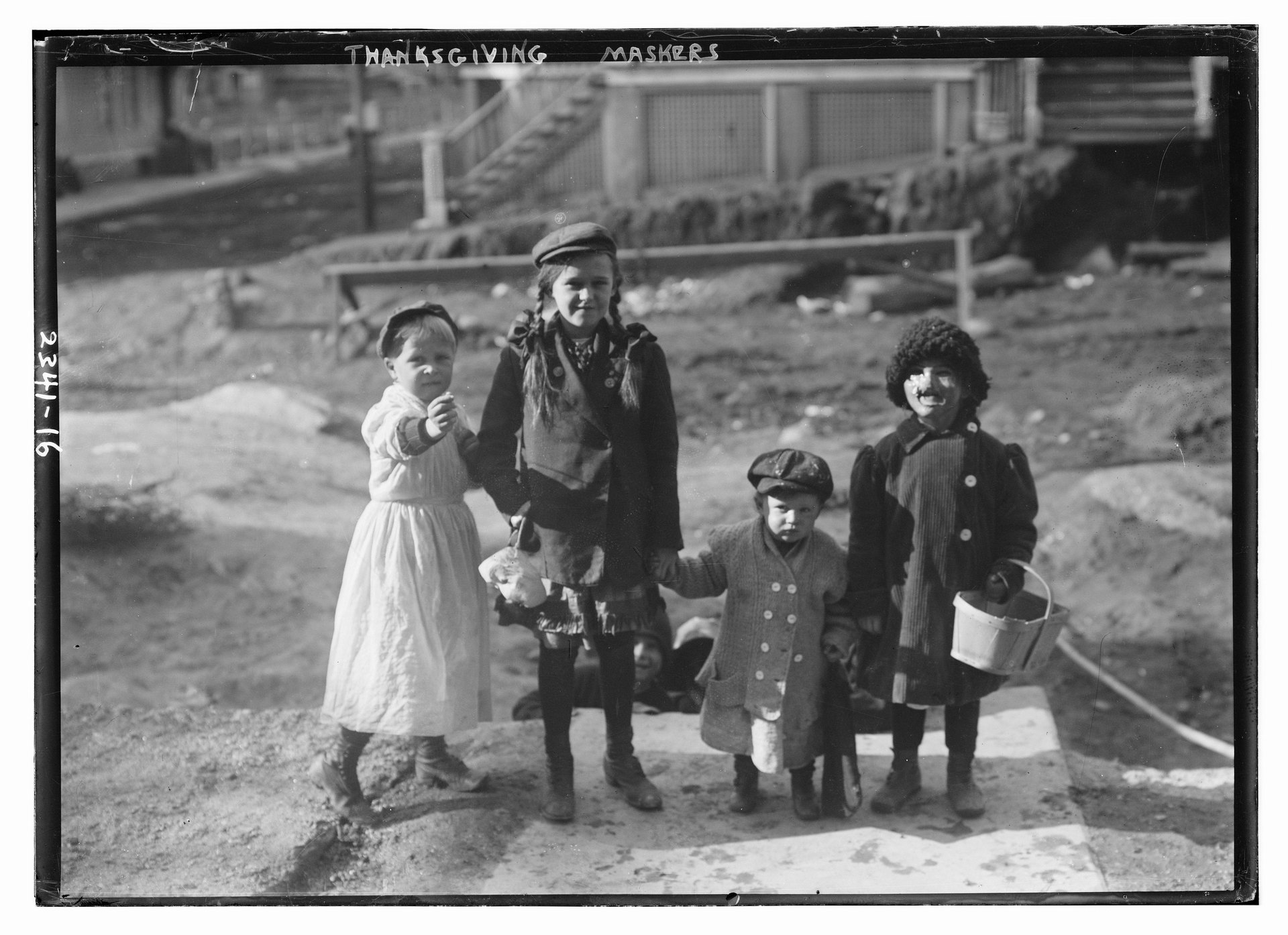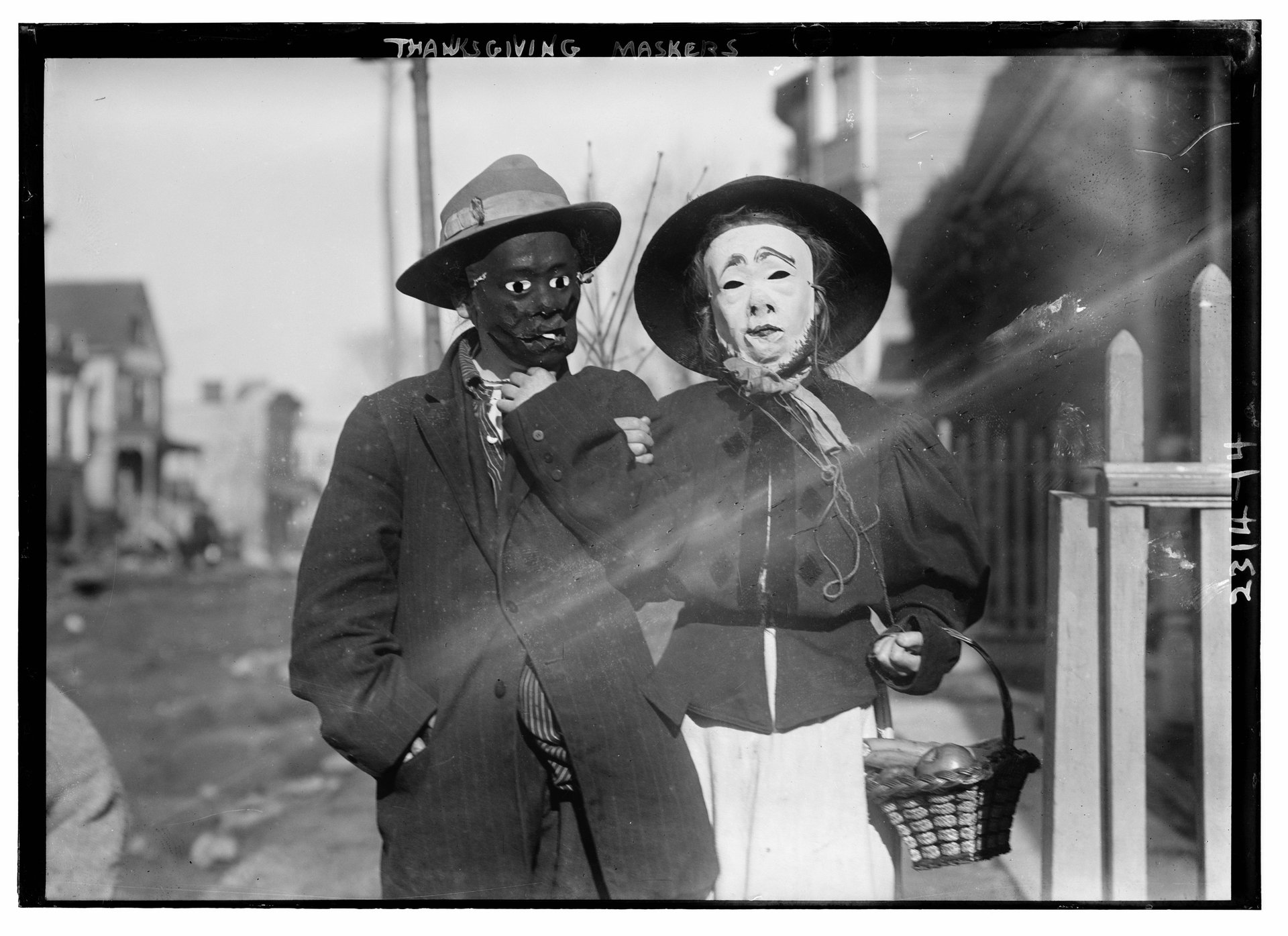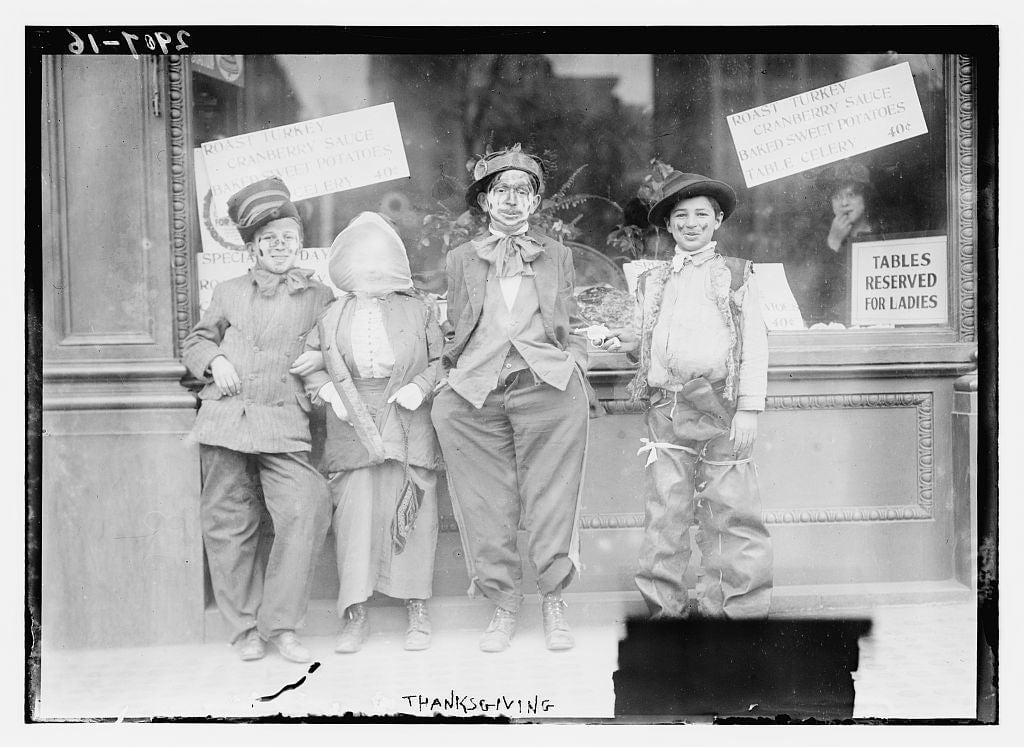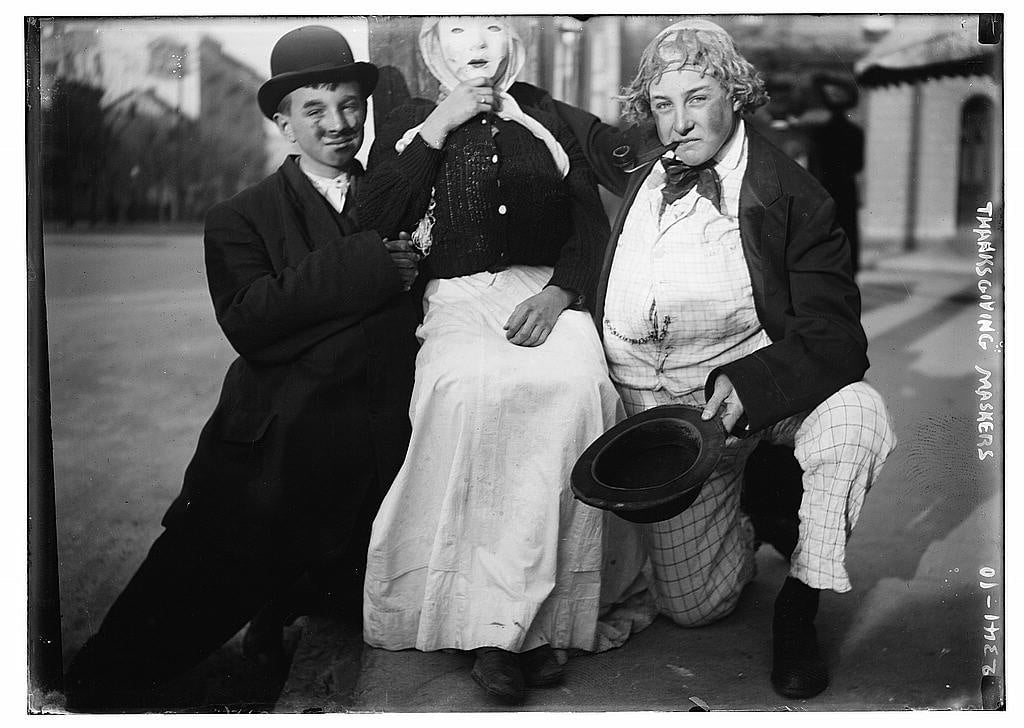Before the Macy’s Thanksgiving parade, there was Ragamuffin Day
There was a time in the US before the Macy’s Thanksgiving parade—a time before festive football and falling asleep on the sofa to the soothing sounds of the dishwasher or Charlie Brown.


There was a time in the US before the Macy’s Thanksgiving parade—a time before festive football and falling asleep on the sofa to the soothing sounds of the dishwasher or Charlie Brown.
In the late 19th and early 20th century, New York City children celebrated the holiday by dressing up in costumes or their most threadbare clothes and going through the streets, cajoling strangers into giving them nickels or pennies. Those who did not pay risked becoming the victims of practical jokes (pdf), such as having a fishmonger’s horn blasted in their ear or being hit over the head with a stocking full of flour. This was Ragamuffin Day.
No one’s exactly sure where the tradition came from, or when it began—Thanksgiving itself only became a national feature after 1864—but by the 1920s, it was a well-enshrined part of the day’s traditions in the city. Youngster competed for prizes, or small change, dressed up in their parents’ castoffs or grinning rubber masks. They were cowboys, medieval kings, even polar explorers. And it wasn’t just the children: one policeman, quoted in the New York Times (paywall) in 1930, recalled members of the Hudson Dusters (a famous street gang), and the New York Rangers hockey team similarly dressed up and parading, alongside “their girls.”

For a long time, the Ragamuffin Parade was taken with good humor. One 1902 newspaper report described how the “queerest looking specimens of ragamuffins waylaid the pedestrians in droves, and many thousands of pennies found their way into the hands of the little nondescripts.” Musicians drummed, feet marched, church bells rang. A few years later, a party of girls disguised themselves as newsboys to take advantage of a free turkey dinner. (When caught, they sang “several patriotic songs” as payment.)
Not everyone enjoyed the tradition. By 1907, people began to point to the dubious legality of the day’s festivities—both begging and “masquerading” were technically forbidden. A letter-writing campaign caught the attention of the Times, which reported multiple calls and notes from readers about this “silly and indefensible nuisance.” The wounding of two by a 15-year-old dressed up as a cowboy, but with a real pistol, can hardly have helped matters. (He was provoked, allegedly, by a “jeering Indian.”)

By the 1920s, however, the ragamuffins had competition. From the mid-1920s, the Macy’s Thanksgiving parade, heralding the beginning of the Christmas shopping season, took attention—and street space—away from carousing ragamuffins. Prohibition, which made alcohol illegal in the US for 13 years starting in 1920, also played a part. Gang members and ice-hockey players alike were said to have previously been attracted not just by the glitz of the parade but the promise of free beer in saloons. Without it, the November chill must have seemed even more inhospitable. Finally, the dawn of the Depression in 1929 made red-hot pennies once dropped from apartment windows now too valuable to jettison.

The death knell may have been an edict from New York’s schools superintendent in 1930. “Modernity is incompatible with the custom of children to masquerade and annoy adults,” he informed the city’s principals and district superintendents, requesting they tell children to cease their spectacle. His call seems to have been heard loud and clear—on the day itself, according to the Times, ragamuffins could be found only “where the subway lines end,” in Flatbush, the Bronx, or Greenpoint.
“The ragamuffin is vanishing,” the paper reported. Within just a few years, it had gone for good.